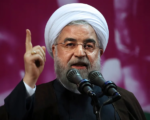The assassination of Hezbollah leader Sayyed Hassan Nasrallah has exposed the extent of Israel’s infiltration into the ranks of the powerful Shi’ite paramilitary group. Nasrallah, long seen as an untouchable figure, was killed in a command headquarters on Friday, following a series of Israeli strikes targeting Hezbollah’s leadership and military infrastructure. His death marks a significant blow to the group, which has already seen several of its top commanders eliminated in recent weeks.
Israel’s penetration of Hezbollah became glaringly evident with the detonation of booby-trapped pagers and radios just days before Nasrallah’s killing. These strikes have dismantled nearly half of Hezbollah’s leadership council and severely compromised its military command. According to sources in Lebanon, Israel, Iran, and Syria, Israel’s intelligence on Hezbollah has been highly accurate, with one Israeli source stating that the country could have targeted Nasrallah at any time over the past 20 years.
Israeli Prime Minister Benjamin Netanyahu and his inner circle authorized the strike while Netanyahu was attending the U.N. General Assembly in New York. Nasrallah’s movements had long been secretive, and he had taken extraordinary precautions since the detonation of Hezbollah’s communication devices. However, Israeli intelligence, which remains shrouded in secrecy, pinpointed his location in an underground headquarters in southern Beirut. This suggests the presence of informants within Hezbollah’s ranks.
The assassination of Nasrallah, coupled with the destruction of critical weapons sites and Hezbollah’s communications network, has dealt a psychological and operational blow to the group. Magnus Ranstorp, a veteran Hezbollah expert, described it as a massive intelligence failure for Hezbollah, which now faces the daunting task of plugging the infiltration within its ranks.

Hezbollah’s response to the assassination remains unclear, but the group has a long history of quickly replacing its leadership. Nasrallah’s cousin, Hashem Safieddine, is widely expected to succeed him. Despite the blow, Hezbollah retains significant military capabilities, including an estimated 40,000 fighters and an arsenal of rockets, missiles, and drones. However, the group has been weakened materially and psychologically by the recent Israeli offensive.
Over the past week, Israel has struck more than 1,000 Hezbollah targets, including its missile stockpiles and supply routes. According to Western diplomats, Hezbollah has lost 20-25% of its missile capacity. Israeli officials claim that Hezbollah’s diminished ability to launch rockets—only a few hundred a day—further proves the success of their offensive.
Iran, Hezbollah’s key backer, had reportedly been planning to send additional missiles to Hezbollah for a prolonged conflict. These weapons were to include ballistic missiles such as the Zelzal and Fateh 110. However, Israel’s intensified airstrikes on supply routes through Syria and Iraq have complicated Iran’s ability to deliver these arms. Iranian Revolutionary Guards’ deputy commander Abbas Nilforoushan was also killed in the same Israeli airstrike that took out Nasrallah.
While Iran remains willing to support Hezbollah militarily, it has refrained from direct involvement in the current conflict, preferring to rely on its proxy groups across the region. Israeli forces continue to target Hezbollah’s infrastructure, including weapons depots and transport routes, in an effort to cripple the group before it can fully mobilize its arsenal.
With Hezbollah weakened and its leadership decimated, the group’s future remains uncertain. While it will undoubtedly regroup and continue its resistance against Israel, Nasrallah’s death marks a turning point in the decades-long conflict between the two adversaries.


















